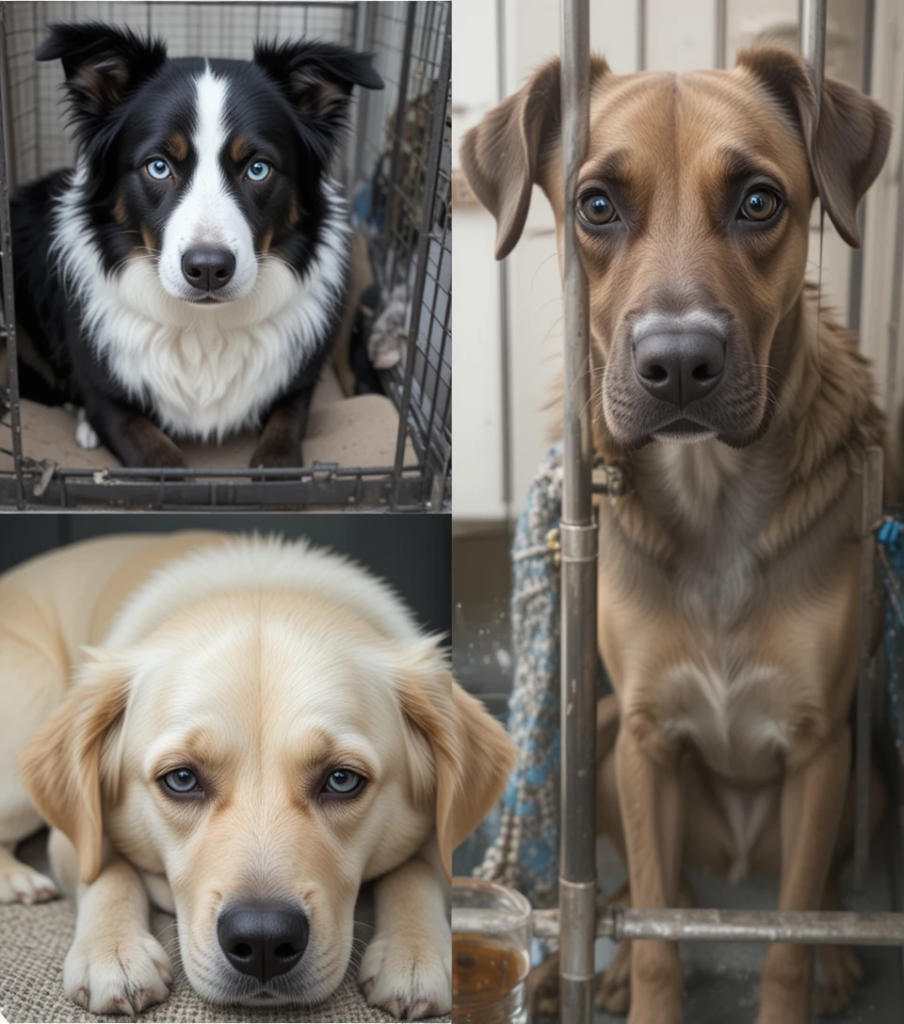🐶 Introduction: The Emotional Side of Dog Life
When we think of dogs, we often picture wagging tails, eager eyes, and endless energy. But what happens when that energy fades, or the tail stops wagging? As odd as it may sound, dogs can experience emotional lows—including burnout and depression.
In fact, more pet owners and veterinarians are recognizing the importance of canine mental health. Like humans, dogs can suffer when their emotional needs aren’t met. Understanding this side of your dog’s well-being is crucial to helping them live a happy, balanced life.
❓ Can Dogs Really Experience Burnout or Depression?

Yes—dogs are capable of feeling emotional distress, and many experts now acknowledge this. While the term “depression” might sound overly human, dogs display similar symptoms of emotional exhaustion and chronic stress.
Burnout in dogs may appear after long periods of overstimulation or lack of rest—especially in working breeds, highly active dogs, or those exposed to constant training or change. Depression can also set in after traumatic events, loss of a companion, or changes in the household dynamic.
Veterinary behaviorists compare canine burnout to emotional fatigue in humans. It’s not just about sadness—it’s about mental and physical overload that impacts the dog’s quality of life.
⚠️ What Triggers Burnout or Depression in Dogs?
Several environmental and emotional stressors can lead to burnout or depression in dogs:
- Loneliness or extended periods of isolation
- Sudden changes in routine, home, or family structure
- Overtraining or lack of adequate rest
- Loss of a pet or human companion
- Boredom from lack of mental or physical stimulation
- Neglect or poor socialization
- Abuse or traumatic events in a dog’s past
Even dogs that seem well cared for may experience internal stress if their environment doesn’t meet their emotional needs.
🐕🦺 Common Signs of Emotional Struggle in Dogs
Not all dogs express emotional issues the same way. But some of the most common signs of depression or burnout include:
- Withdrawal from people or other pets
- Lethargy and sleeping more than usual
- Loss of appetite or disinterest in favorite foods
- Lack of interest in toys, walks, or play
- Destructive behaviors (chewing, digging, whining)
- Pacing or restlessness
- Excessive licking or grooming (often self-soothing)
If these behaviors last more than a few days and don’t improve with routine changes, it may be time to investigate deeper.
🐩 Dogs at Higher Risk of Burnout or Depression

Just like people, some dogs are naturally more sensitive or prone to emotional overload. Dogs most at risk include:
- Working breeds (Border Collies, Belgian Malinois, German Shepherds)
- High-energy dogs without adequate outlets
- Shelter or rescue dogs with past trauma
- Senior dogs experiencing cognitive changes
- Dogs that lack companionship or daily stimulation
- Breeds with strong emotional bonds, like Vizslas, Labradors, and Poodles
Knowing your dog’s breed tendencies and background can help you proactively support their mental well-being.
🧠 Health Risks Linked to Untreated Canine Burnout
Ignoring signs of dog depression or burnout can lead to:
- Weight loss or gain due to appetite changes
- Weakened immune system
- Poor coat health and grooming habits
- Aggression or reactivity due to frustration
- Chronic stress-related illnesses
- Compromised bond between pet and owner
Catching the signs early can make a significant difference in your dog’s health and your relationship with them.
✅ Helping Your Dog Recover: Vet-Approved Strategies
Once you recognize the symptoms, compassionate, consistent care is key to recovery. Strategies include:
- Establishing a calm, predictable routine
- Offering gentle stimulation (snuffle mats, scent walks, light training)
- Engaging in regular, pressure-free playtime
- Spending quality bonding time without overstimulation
- Using calming tools like anxiety wraps, soothing music, or pheromone diffusers
- Nutritional support—consider dog foods that support mood and cognition
In some cases, your veterinarian may recommend short-term medications or refer you to a veterinary behaviorist.
🧩 Emotional Enrichment: Key to Long-Term Wellness
Preventing burnout isn’t just about avoiding stress—it’s about building a fulfilling daily life for your dog.
Offer:
- Scent-based enrichment (hide-and-seek, foraging games)
- Interactive toys (KONGs, treat puzzles)
- Positive reinforcement training sessions
- Outdoor time with safe exploration
- Socialization with other dogs or calm environments
- Rest and quiet spaces free from noise and chaos
Emotional balance often comes from predictable routines and small, satisfying challenges.
🩺 When to Call a Veterinary Behaviorist
If your dog’s mood doesn’t improve—or worsens—it’s time to consult a professional.
Veterinary behaviorists are trained to treat emotional and behavioral conditions using:
- Behavior modification plans
- Training techniques tailored to your dog
- Stress-reduction therapies
- Medication, when appropriate
Seeking help isn’t a sign of failure—it’s a sign of love.
🌱 Preventing Burnout Before It Begins
To help your dog thrive emotionally:
- Stick to a consistent routine
- Meet breed-specific needs for exercise and stimulation
- Create downtime between activities
- Avoid excessive scolding or punishment
- Stay attentive to mood changes and body language
- Celebrate calm behaviors as much as excitement
A well-balanced dog is a joyful companion—and prevention is always the best medicine.
🙋♀️ 10 FAQs About Dog Burnout and Depression
- What does dog burnout look like?
Dogs may withdraw, become lethargic, lose interest in activities, or display anxiety behaviors like pacing or chewing. - How can I tell if my dog is emotionally distressed?
Look for changes in appetite, sleep, social behavior, and overall energy levels. - Is it normal for dogs to act sad or mopey?
Brief low moods are normal, but persistent sadness may signal depression or emotional fatigue. - Can overworking a dog lead to mental fatigue?
Yes—especially in high-drive or working breeds that lack proper rest and recovery. - How can I cheer up a dog showing signs of depression?
Use gentle engagement, interactive play, consistent routines, and emotional bonding. - What are the best mental enrichment toys for dogs?
Puzzle feeders, snuffle mats, scent toys, and toys that require problem-solving are great options. - Do some breeds get depressed more easily than others?
Yes. Breeds that are emotionally sensitive or highly intelligent may be more prone to stress. - Can dogs become depressed after losing a loved one?
Absolutely—dogs can grieve the loss of another pet or human family member. - Is canine depression treatable without medication?
Often, yes. With the right care, many dogs recover using enrichment, bonding, and structure. - When should I seek help for my dog’s mental health?
If symptoms persist beyond a few weeks or interfere with daily life, consult your vet or a behaviorist.

